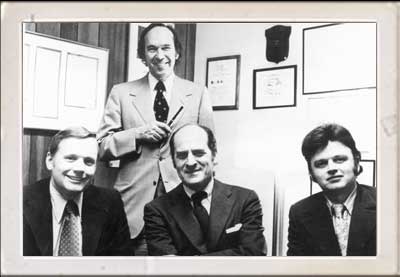About the HARP Group

Neil Armstrong resigned as Deputy Administrator for Aeronautics at NASA and joined the faculty of the Department of Aerospace Engineering at University of Cincinnati in 1971. Not long after his arrival at UC he became involved in an interdisciplinary
project known as HARP, named for the four members of the research team: Dr. Henry Heimlich, Armstrong, Dr. George Rieveschl, and Dr. Edward Patrick. Based on
the design of the coolant pump used in Apollo spacesuits, the initial goal was to investigate methods of reducing damage to blood cells while being pumped
during
an open-heart surgery or cardiac arrest. After a year of conducting experiments and gathering data, the project was approved by the University in July 1975. HARP led to the creation of the Institute of Engineering and Medicine, directed by Armstrong, in the fall of 1975.
In March 1975, HARP presented their report “Apollo Double Diaphragm Pump for Use in Artificial Heart-Lung Systems” at the Association for the Advancement of Medical Instrumentation. By 1977, they had produced a “Proposal for Development of Artificial Oxygenators for Relief and Treatment of Chronic Lung Diseases,” stating a larger goal of developing an implantable artificial heart-lung system to help patients with emphysema and chronic bronchitis. Though they gave themselves a year to develop a pump to “revolutionize heart-lung machines and devise a portable oxygen system that enables patients with chronic lung disease to live a normal life,” the project was abandoned when Rieveschl and Armstrong resigned from their positions at UC.
Primary source material in the Neil A. Armstrong Commemorative Archive related to HARP includes correspondence between the team members, experiment data, press releases, news clippings, and reports.
Back to His Time at UC page